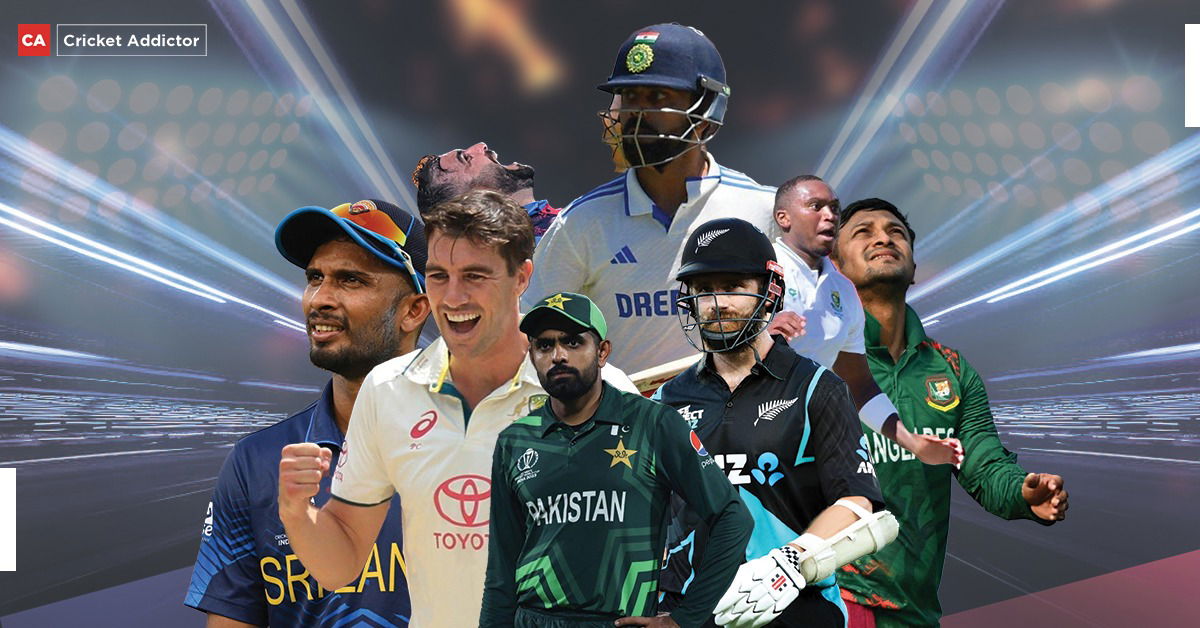Five Things That We Do Not See In Cricket These Days
Published - 06 Apr 2020, 07:27 PM | Updated - 23 Aug 2024, 12:05 AM

Table of Contents
Change is the only constant in life. I know this is a cliche that you might have heard millions of times but the fact of the matter, it is the unwritten truth of life. With times things evolve and cricket does not bore an exception to the aformentioned fact.
From timeless test to the Hundred, cricket has come a long way and in the past century or so and the while the basic ethos of the game continue to remain the same, the rules, playing conditions have changed significantly. We don’t see ODIs being played in whites anymore nor do we runners coming onto the field for an injured batsman. 60-over and 50-over ODIs have become a distant reality while the good old zing cream that had become synonymous with the fast bowlers of the erstwhile era, is barely seen these days.
What all has changed in cricket then? This article lists five such things that we no longer see in cricket these days.
5. Rest days between Test matches

Yes! My dear friends! For the cricket fans of the 21st century, this might come as an alien concept but back in the day players used to get an entire day off between a Test match, where some would go fishing or golfing to make the most of the free time or as in the case of Clyde Butts, get married. The rest day would usually come after the third day, which in England would almost always be a Sunday- but it was occasionally moved around.
While in England, the last Test match with a rest day took place against India at Nottingham in 1996, globally, the concept breathed its last when hosts Sri Lanka locked horns with Zimbabwe at Colombo in December 2001. India’s last Test match at home with a rest day came against Sri Lanka at Kanpur in 1994.
4. Multi-nation tournaments

Back in the 1980s and especially 1990s, the euphoria around One-day International cricket was at its hilt and one of the major reasons behind it. Like the Austral-Asia Cup, Nehru Cup, Hero Cup, Independence Cup, and the multiple cola-sponsored quadrangulars and pentangulars in Sharjah.
At the turn of the century, barring the annual tri-series in England and Australia, multi-national tournaments became few and far in between. But the tipping point in 2008 with the advent of the Indian Premier League. The advent of T20 leagues and the increased onslaught of long bilateral rubbers meant, multi-nation tournaments these days are as rare as visiting sides winning a Test match outside the realms of their home conditions.
3. Cigarette Sponsors

With increased social awareness around the harmful effects of cigarettes, out went the sponsorship that cricket sought from tobacco companies. But for more than 30 years, tobacco sponsors like Benson & Hedges, Wills were a part of cricket folklore.
Not only were the tri-nation series in Australia named after the brand Benson & Hedges, but the 50-over World Cups of 1992 and 1996 were also sponsored by B&H and Wills. As far as the Indian cricket team is concerned, Wills continued to be its prime kit sponsor for a major part of the 1990s- 1993-1996 & 1999-2001.
2. Home Umpires

The present-day Umpires come under a lot of scrutiny. We scrutinize every LBW decision made by them and depending on which side we are supporting, often accuse them of bias. But the old-timers would tell you that things were much worse back in the day when there was no concept of neutral umpires.
They would tell you how getting an LBW decision against likes of Javed Miandad LBW in Pakistan or any decision for that matter against the Kiwis in New Zealand or the Aussies Down Under was almost next to impossible. The same was true for umpires in India or any other country.
Remember that iconic image of Michael Holding kicking the stumps in disgust during that controversy-ridden West Indies tour of New Zealand in 1979-80 where the Kiwi umpires just refused to give any decision in favor of the then World Champions? Well! Things have surely got better ever since the concept of neutral umpires came into effect.
While the first decisive step came in 1986 when two Indian umpires officiated in a Pakistan vs West Indies Test in Lahore, the concept was actually championed by former Pakistan captain Imran Khan, who invited two English umpires to officiate in the 1989-90 Test series against India.
The ICC experimented with one neutral umpire/match in 1992 before increasing it two and making the move permanent with the 2002 India vs West Indies Test series.
1. Pitch Invasions

Ahh! The pitch invasions- one of the most iconic images of the 20th century. These days, cricket teams can celebrate their moments of success on the field but that was certainly not the case back in the 20th century where the crowd used to just invade the ground as soon as the match got completed.
Well! Sometimes they did not even wait for the match to be completed. Remember the 1999 ODI series between West Indies and Australia where the crowd invaded the ground even before Steve Waugh had completed the 3rd run that would have given his side a victory? The situation got pretty dangerous with Waugh getting heckled by some of the over-enthusiastic and probably drunk Caribbean fans.
Pitch invasions were a part of the game till as early as the start of the 2000s before the move was completely banned in order to ensure greater security for the players.











